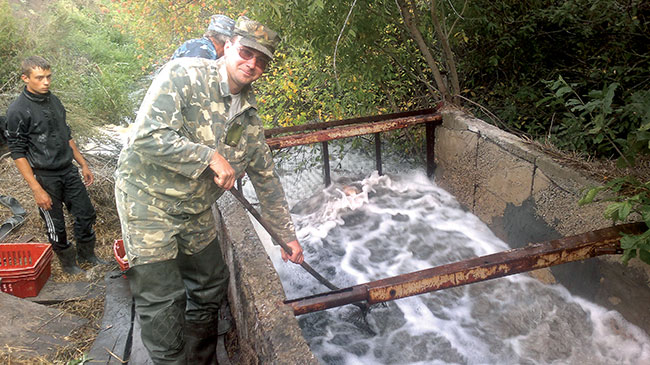
News & Views
Belarus set sights on aquaculture development despite sanctions
January 29, 2023 By Hatchery International staff
 Fish farming in Belarus is primarily about carp breeding.
Photo: Nasha Ryba store
Fish farming in Belarus is primarily about carp breeding.
Photo: Nasha Ryba store Belarus wants to diversify and make fish farming more effective for the benefit of domestic customers, according to the country’s officials.
In the past few years, Belarussian aquaculture saw the share of total carp production falling from 95 to 71 per cent, estimated Vladimir Kostousov, deputy director of the Belarussian Institute of Fisheries.
In Belarus, carp are bred in ponds using traditional methods. Although carp will likely keep dominating the industry in the foreseeable future, fish farmers plan to enhance their efforts aimed at product diversification.
“You won’t surprise the consumer only with carp,” said Yury Bazhenov, the director of the fish farm, Selets. “To meet the growing consumer demand both at home and abroad, the focus must be placed on valuable fish species.”
Over the past few years, Belarus established the production of broodstock of several new fish species. This was a necessary step to develop production, as Western sanctions have made it challenging for Belarussian farmers to import broodstock.
“Today, we can boast of having a broodstock of sterlet, Siberian sturgeon, and beluga. The margins of [breeding] these fish species are very high. The profitability of sales of smoked fish, caviar and broodstock stands at 20 per cent, or even higher,” Bazhenov said.
In addition, Belarussian scientists are working to make fish farming more effective. Kostousov disclosed that until recently, Belarussian feed mills imported protein components to manufacture high-quality fish feed. However, the supplies have also been disrupted by the sanctions.
“The task of the institute is to minimize the costs and damage caused by the current external economic conditions,” Kostousov said, adding that the work is being done in multiple directions, including “to increase the digestibility of the carbohydrate component of fish feed” and improve feed production technologies.”
Print this page
Advertisement
- Commercial probiotics, enzymes in Pacific white shrimp trumps fermented probiotics
- Cadman Capital joins Urchinomics to accelerate next stage of growth





